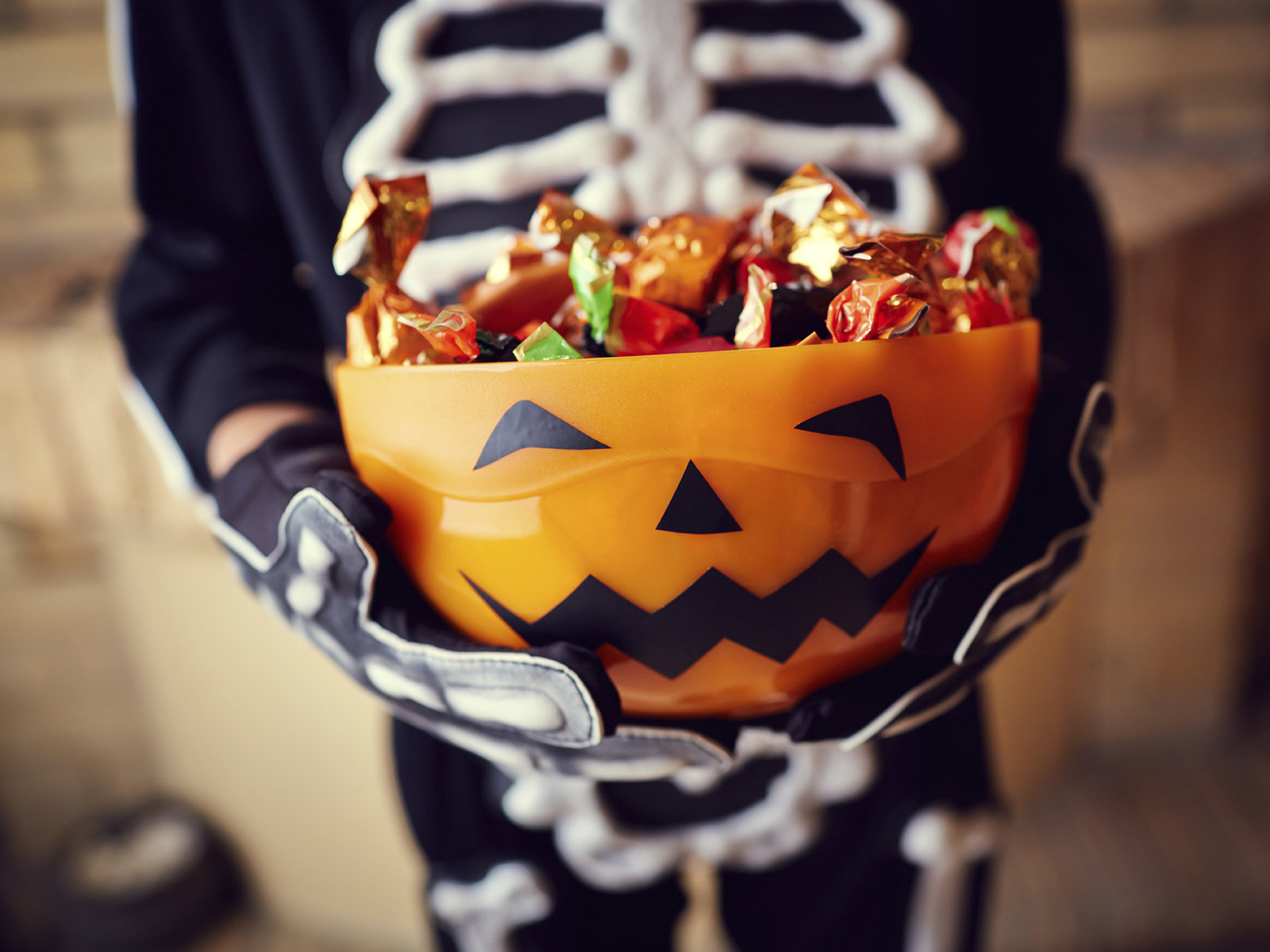
Even though it’s not an official holiday, Halloween is much beloved by children and adults alike. What’s not fun about trick-or-treating, apple bobbing, or costume parties? Answer: foodborne illness, also called food poisoning.
To make sure treats are safe for children, follow these simple steps:
- Snacking: Children shouldn’t snack on treats from their goody bags while they’re out trick-or-treating. Give them a light meal or snack before they head out – don’t send them out on an empty stomach. Urge them to wait until they get home and let you inspect their loot before they eat any of it.
- Safe Treats: Tell children not to accept – and especially not to eat – anything that isn’t commercially wrapped. Inspect commercially wrapped treats for signs of tampering, such as an unusual appearance or discoloration, tiny pinholes, or tears in wrappers. Throw away anything that looks suspicious.
- Food Allergies: If your child has a food allergy, check the label to ensure the allergen isn’t present. Do not allow the child to eat any home-baked goods he or she may have received.
- Choking Hazards: If you have very young children, be sure to remove any choking hazards such as gum, peanuts, hard candies, or small toys.
- Bobbing for Apples: This is an all-time favorite Halloween game. Here’s a way to say “boo” to bacteria that can cause food borne illness.
- Reduce the number of bacteria that might be present on apples and other raw fruits and vegetables by thoroughly rinsing them under cool running water. As an added precaution, use a produce brush to remove surface dirt.
If your idea of Halloween fun is a party at home, don’t forget these tips:
- Beware of spooky cider! Unpasteurized juice or cider can contain harmful bacteria such as Salmonella. To stay safe, always serve pasteurized products at your parties.
- No matter how tempting, don't taste raw cookie dough or cake batter that contains uncooked eggs.
- Serving hot foods? Cook everything to a safe minimum internal temperature to ghost bust any foodborne illness bacteria.
- Scare bacteria away by keeping all perishable foods chilled until serving time. These include finger sandwiches, cheese platters, fruit or tossed salads, cold pasta dishes with meat, poultry, or seafood, and cream pies or cakes with whipped-cream and cream-cheese frostings.
- Bacteria will creep up on you if you let foods sit out too long. Don’t leave perishable goodies out of the fridge for more than two hours (1 hour in temperatures above 90°F (32°C)).

